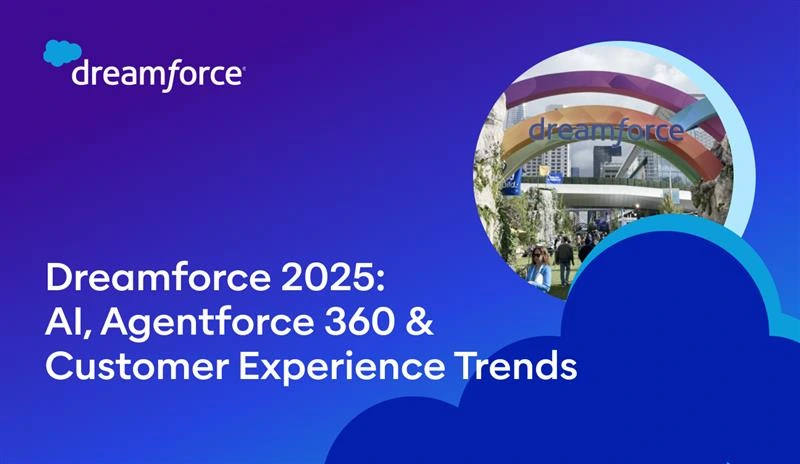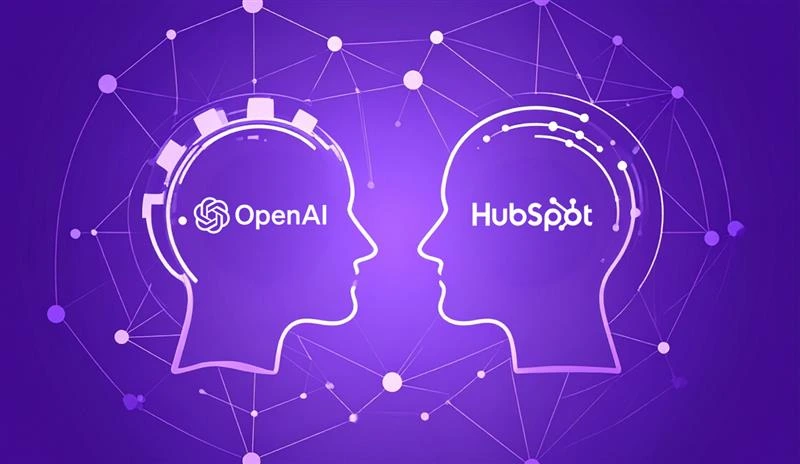The Importance of Marketing Personalization Strategies

The Importance of Marketing Personalization
Personalization has become a buzzword in the marketing/advertising industry, but especially in digital marketing – and for good reasons. Personalized marketing can mean many different things, depending on your goals. It truly has limi tless possibilities - from website design to in - store experience, from how a brand makes customers feel to the types of communications and recommendations customers receive.
It is integral that marketers understand its importance to the overall customer ex perience and journey to truly compete in today's market. These days customers have come to expect personalization and adding a [First Name] to an email campaign is no longer enough.
What is personalization?
Merriam-Webster defines personalize as “to personify, to make personal or individual.” To apply this concept, marketers use data and past behavior to customize every touchpoint of the customer journey for individuals by using marketing automation and data tools. When we look at it on a grand scale, personalization has endless possibilities across channels, such as email, SMS, chatbots, websites, push notifications, in-app messaging, branding, in-store interactions, etc. Businesses have tons of opportunities “to personify” and make an impact on revenue and retention.
Personalization Strategy
“Personalization depends on strategy that is tied to both business and customer goals.” - Gartner
When creating a personalization strategy, companies need not focus solely on business goals but also include customer goals. Without considering customer goals, brands could completely miss out on what customers really want, resulting in lost revenue and missed audience reach or an unengaged customer base. Inversely, if brands only focus on what the customer wants, they could be missing out on the company’s bottom line.
For personalization efforts to be successful, brands must meet both the business goals and customer expectations.
What do customers want?
Customers know that brands have access to their data, and they expect marketers to use it to create tailored experiences across brand touchpoints. To meet customer expectations, brands must prove they know the customer. Marketers are expected to use customer data to show relevant information to each customer. Customer data can be broken down into four main categories:
1. Demographic or Personal Data
Includes biographical and personal information. Data points can include name, birthdate, address, and phone number.
2. Behavioral Data
Demonstrates how customers interact with you on different channels. Data points can include clicks through rates on your website, email, or app, interactions on social accounts, or why they reached out to customer service.
3. Transactional Data
Provides the customer’s purchase history with your brand. Data points can include purchases, returns, transaction timing, and frequency of purchases.
4. Attitudinal Data
Informs on how customers feel about your brand. Data points can include customer satisfaction, if customers want your products or how they feel about the offerings, and how easy your products are to use.
As an important reminder, when collecting data make sure to remain compliant with all data security laws such as but not limited to CAN - SPAM, California Consumer Privacy Act (CCPA), and the General Data Protection Regulation (GDPR).
To exceed customer expectations, brands need to use data to help customers. Some ways brands can show they are helping customers include simplifying the purchase process, providing reassurance on products and business practices, educating customers, rewarding loyal customers, and more.
Why does personalization matter?
Personalization can have a huge impact on businesses. Due to its impact on lead quality, engagement, and bo ttom line, personalization is no longer optional for brands – it's required. By using personalization, brands can:
1. Improve Customer Experience
Move from fragmented, non-cohesive customer experiences to seamless customer journeys from in-store to online.
2 . Improve Lead Quality
When prospects have a more tailored interaction with a competitor, you may lose out on new leads. By utilizing personalization, you can use different campaigns to gather new data points on your prospects and then use that data to figure out the best way to help them convert.
3 . Decrease Customer Acquisition Cost
The cost of acquiring a new customer can sometimes be very high and over the last few years, it has risen nearly 60%. By utilizing personalization, companies can potentially lower the cost of new customer acquisition by 50%!
4 . Increase Engagement
When customers feel like you are speaking directly to them, they want to engage more with your brand. Increased engagement = increased revenue.
5 . Increase Loyalty and Retention
Keep your campaigns relevant and show customers how your brand can help them. Whether that’s through explaining how your tool works or how to use their reward points, customers want you to help them.
6 . Drive Revenue
The more energy brands spend on getting to know their prospects and customers and tailoring those journeys, the greater the impact on the business bottom line. Personalization has been shown to increase revenue between 5 - 25%, and companies that prioritize personalization have seen increases in revenue up to 40%.
And if this list of metric improvements didn’t convince you that personalization is important, look at these numbers.
Brands that are not using personalization or are doing it poorly led to 41% of customers switching companies, resulting in a combined lost revenue of $756 billion.
Why aren’t all brands using personalization?
Now that we know personalization can have a huge impact on both customers and businesses, why aren’t all brands using it? It comes down to these main challenges:
1. Limited Data
Data is key to personalization efforts; without it brands cannot segment audiences, place prospects or customers into the correct journeys, or add in the correct dynamic content components, significantly hindering personalization efforts.
2. Poor, Deteriorating, and/or Siloed Data
Personalization depends on access to data points across the customer journey. If data is bad, outdated, or data systems are not integrated, marketers will not have the whole view of the customer, limiting personalization capabilities.
3. Outdated or Ineffective Technology
Siloed or old systems hurt a brand’s ability to utilize personalization and adding new technology is expensive. Not to mention the time it takes to implement, train employees, and influence adoption.
4. Increased Content Requirements
When creating personalized marketing campaigns, marketers often use personas to help guide their content to different types of customers. For instance, instead of creating one set of copy for an email, marketers could now be writing many different copy versions depending on the audience for the same email campaign.
5. Lack of Time and Resources
And of course, like many optimization tactics, it comes down to time and resource allocation. Adding new technology can be expensive and getting the right employees in place and trained to make it successful takes up time and resources some companies would rather spend elsewhere.
Keys to Unlocking Success
Now that we have determined what marketing personalization means, and its benefits and challenges, how can you help your brand be successful?
Start by answering these questions:
- What is the business goal and is there a personalization strategy with defined objectives?
Without knowing your company’s goals, it’s hard to implement a strategy, and without a strategy, it’s hard to determine your objectives and tactics. Start at the top with the overall vision and work your way down to the approach. - What are the customer expectations and are those being met?
What your company thinks customers want and what customers want do not always align. If there is a gap, then you are not meeting customers’ expectations. Look at customer service topics or product feedback to help you understand what your customers truly want. - What data is currently available and what is known about your prospects and customers?
0, 1st, and 3rd party data are key to personalization efforts. Look at the data customers have given you (zero-party data) through actions like a sign-up form or account registration. Comb through the data you have collected on your customers (1st party data) and see where impactful data points can help you curate a journey or audience. Utilize data from other sources (3rd party data) s such as social channels to help you get a full picture of customer actions. - Do you have all your customer data aggregated for a 360-degree view?
Once all data points have been identified, you need to be able to aggregate them together for a full view of your customers. Do you have the right processes, resources, and technology to do that? Has your company explored Customer Data Platform (CDP) options? - What tools are currently utilized and are they integrated? What marketing tools are used to enable campaigns and journeys?
Is there room in the budget for new tools, training, or employees with experience in personalization? Do you have a marketing automation system that connects with your CRM and other data systems? Without the right tools, your chances of being successful at personalization efforts are hindered.
Final Thoughts
Businesses, and especially marketers, can no longer afford to ignore personalization or to only implement it haphazardly without repercussions. The customer experience, retention, and bottom line can all be made or broken by the success or lack of personalization efforts in the customer journey.
Sources:
- https://www.mckinsey.com/business-functions/marketing-and-sales/our-insights/the-value-of-getting-personalization-right-or-wrong-is-multiplying#:~:text=Research%20shows%20that%20personalization%20most,intimacy%2C%20the%20greater%20the%20returns.
- https://www.dynamicyield.com/lesson/opportunity-cost-personalization/
- https://www.retaildive.com/news/poor-personalization-cost-businesses-756b-last-year/512255/
- https://emtemp.gcom.cloud/ngw/globalassets/en/insights/executive-guidance/documents/insights/executive-guidance-maximize-personalization-ebook.pdf
- https://blog.hubspot.com/marketing/data-personalize-marketing-li
- https://www.epsilon.com/us/about-us/pressroom/new-epsilon-research-indicates-80-of-consumers-are-more-likely-to-make-a-purchase-when-brands-offer-personalized-experiences
- https://movableink-marketing.s3.amazonaws.com/2021/eBooks/The-State-of-Personalization.pdf
- https://blogs.oracle.com/cx/post/customer-data-categories-and-how-to-use-them
- https://www.profitwell.com/recur/all/how-is-cac-changing-over-time
- Gartner’s Guide to Successful Personalization, published 24 July 2020 by Jennifer Polk. ID G00715517
About The Author:
Sagepath Reply, Digital Experience Agency | Sagepath Reply
Sagepath Reply is a full-service agency specializing in digital experience design and development, digital marketing, digital transformation and analytics.

Let’s Start a Conversation
Reach out to discuss your digital transformation needs and see how we can help. We would love to start a long-term partnership with your company.
Get in Touch


